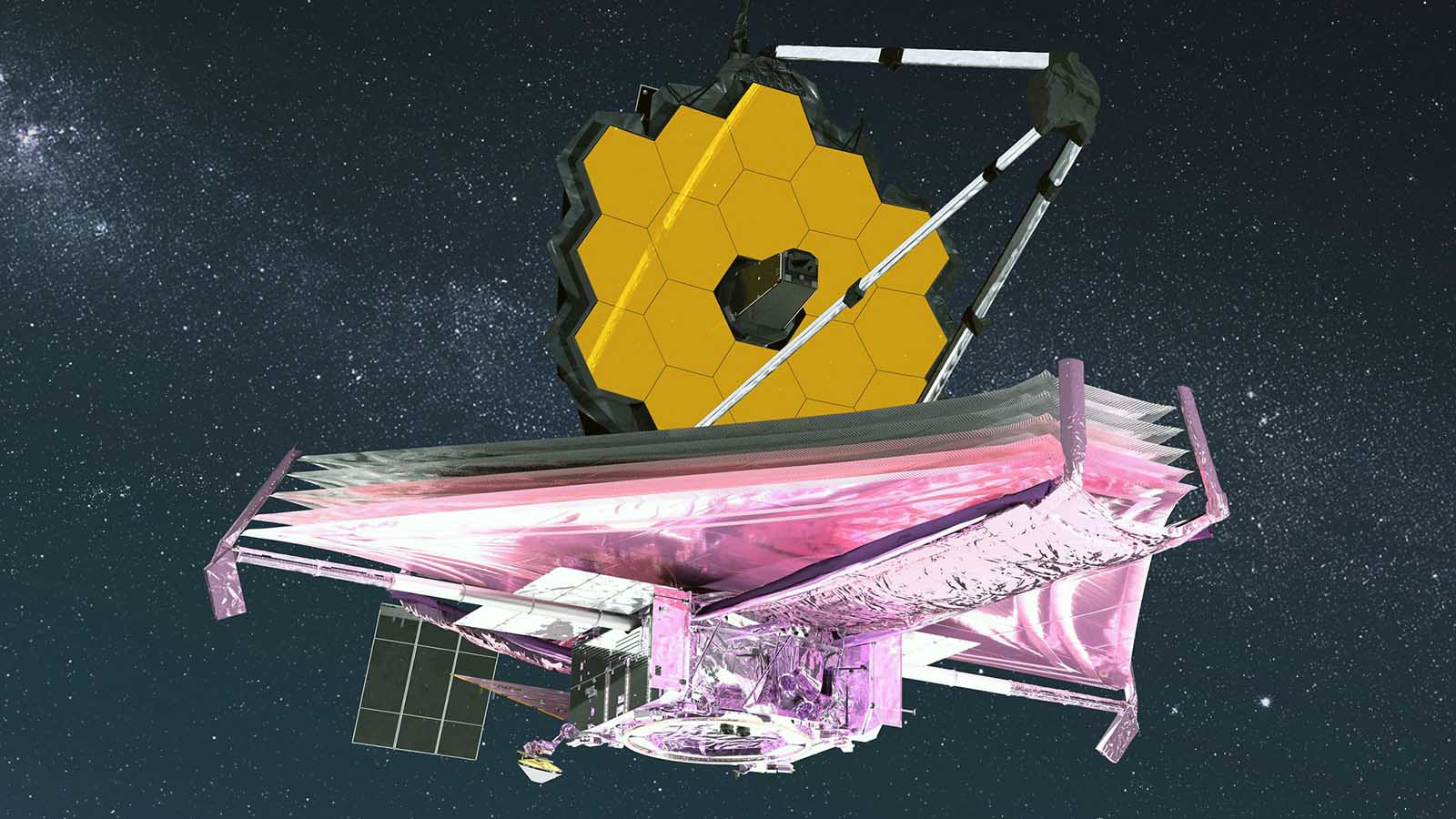
# **JWST Reveals Carbon-Rich Exoplanets 133 Light Years From Earth**
The James Webb Space Telescope (JWST) has delivered unmatched insights into exoplanets circling the star HR 8799, situated roughly 133 light years away from our planet. This research, spearheaded by Johns Hopkins University PhD candidate William Balmer, represents the inaugural instance where spectral data has conclusively demonstrated that these gas giants possess substantially more carbon than their parent star. This discovery has significant implications for the comprehension of planetary formation, indicating that these exoplanets have developed in a manner akin to Jupiter and Saturn in our own solar system.
## **A “Super” Solar System**
HR 8799 is a distinctive and valuable system for examining gas giants. It features four enormous exoplanets, a substantial asteroid belt, and a central star that is approximately 1.5 times more massive and twice as radiant as the Sun. “It’s akin to a ‘super’ solar system,” Balmer points out, underlining its importance as an outstanding environment for exploring planetary formation processes.
Before the JWST observations, rival theories proposed various origins for the planets of HR 8799. One theory suggested that these gas giants formed by collecting clumps of hydrogen and helium from the protoplanetary disk, implying that their chemical makeup should closely mirror that of their host star. However, without high-precision observational data, it was difficult to tell apart these theories.
## **Spectral Advancement with JWST**
The JWST’s capability to acquire infrared spectra with unmatched accuracy proved essential in unraveling this puzzle. Earlier observations of these exoplanets depended on ground-based spectroscopy, which faced challenges from Earth’s atmospheric interference. The JWST, on the other hand, enabled astronomers to examine exoplanetary atmospheres at wavelengths of 4–5μm—vital regions where carbon dioxide (CO₂) is most easily detected.
Balmer expressed his astonishment at the data’s stability, remarking that the telescope’s mirror sways by less than the size of a typical cell, guaranteeing extremely precise measurements. The resulting spectra uncovered that the gas giants of HR 8799 hold more than five times the carbon-to-hydrogen ratio than that of our Sun. Since HR 8799 is believed to possess a composition akin to that of the Sun, this implies that these planets must have formed differently than simple gas accumulation from their host star.
## **Formation Model: Analogous to Jupiter and Saturn**
The results strongly endorse the notion that these exoplanets came into being through hierarchical accretion, a process where dust coalesces into pebbles, then larger planetesimals, ultimately leading to the formation of planetary cores. Rather than emerging directly from gas clouds, the planets presumably developed solid cores that drew in substantial atmospheres of hydrogen and helium under massive gravitational forces. As this process unfolded, heavier elements—including carbon—were incorporated into their atmospheres, enriching them significantly beyond the makeup of their progenitor star.
“This is an excellent opportunity to enhance our understanding of planet formation,” states Bertram Bitsch, an astrophysicist at University College Cork. “These observations provide a fresh constraint for our models: the chemical makeup of the planets themselves.”
## **Future Research and the Role of JWST**
Nicholas Evert Nasedkin, a postdoctoral researcher at Trinity College Dublin, had earlier indicated that the HR 8799 planets are extremely enriched in heavier elements. He concurs that these findings mark a substantial advancement and highlight the JWST’s capability to scrutinize exoplanetary systems even near to bright stars. “This research truly stretches the limits of what the JWST can achieve,” Nasedkin remarks. “The next phase will involve acquiring more detailed spectroscopic data to further characterize these atmospheres and deepen our insight into their formation history.”
The pioneering observations from the JWST continue to transform planetary science, providing new perspectives on the variety of exoplanets and their evolutionary trajectories. By investigating systems such as HR 8799, astronomers are establishing a more complete understanding of how planets—both familiar and foreign—form and evolve throughout the cosmos.